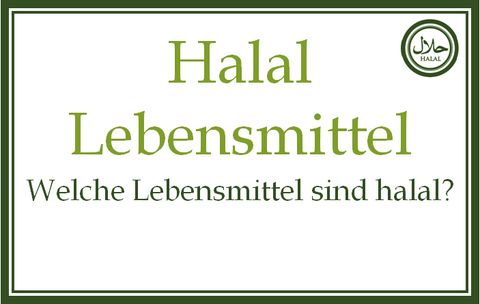Which foods are halal?
Which foods are halal?
The categorization of a food as permitted (halal) or prohibited (haram) is an interplay of numerous factors (read also: What does halal mean?). The primary sources for such an endeavor are the Qur'an and the Sunnah of the Prophet Muhammad (s). Furthermore, geographical conditions and circumstances play a role. And finally, food production is such a highly specialized field that it is divided into different sciences (e.g. food chemistry or technology). Processes and materials used change so rapidly that no generally valid statements can be made about product categories. Rather, individual components and manufacturing processes are considered and analyzed by Islamic legal scholars and subsequently classified as halal or non-halal.

Halal classification by certification institutes
Today, the classification is no longer carried out by individual scholars. For such tasks, depending on the claims, school of law and region, various certification institutes have been established in the world, which carry out the certification of a product as permitted(halal) on behalf of food producers and restaurants etc.. In order to obtain a seal from the relevant institute, the organization or company wishing to obtain the certificate must follow all the criteria and conditions. A well-known contact in Europe and especially in Germany is the European Halal Certification Institute (EHZ) in Hamburg.
Criteria for Halal Certification
The EHZ provides an easy-to-understand overview [1] of the necessary criteria for halal certification. Certification institutes examine the Koran, the Sunnah of the Prophet Muhammad (s) as well as legal opinions of various scholars and test products, foodstuffs and especially the manufacturing processes according to the previously decided standards. These are to be considered in the following as an introduction to the topic and are to be reproduced according to their meaning. Halal food must therefore
consist of halal raw materials
- come from permitted animals that have been slaughtered in an Islamically correct manner.
- be produced "pure". That means, for example, without blood, excrement, etc.
- be produced absolutely alcohol-free.
Alcohol may also not be used for processing, whereby ethanol is meant by alcohol in this context. In the figurative sense, all intoxicating substances are basically forbidden (haram). Furthermore, seafood is generally permitted. As cold-blooded animals, these do not require slaughter.
These criteria can be broken down further below. Since the meat category is a broad and sometimes complex area of this topic, the focus will first be on the products and foodstuffs. Points such as halal slaughtering and the criteria in the manufacturing process (keyword: cross-contamination) of food will be dealt with in separate articles.
Halal raw materials for the production of food are
- Vegetable raw materials in which no fermentation has taken place (e.g. unfermented fruit juices)
- animal raw materials that come from permitted and halal slaughtered animals (e.g. gelatin from a halal slaughtered cow).
Haram raw materials are
- Blood
- Pork
- Meat from dead animals
- Meat of carnivores with fangs, as well as birds of prey with claws.
- Alcohol as a stimulant, regardless of form and concentration
What does that mean in concrete terms?
The criteria mentioned all seem somewhat abstract. For better clarification, two concrete examples are dealt with.
Some food producers have switched from pork gelatin to beef gelatin, for example in fruit gums. The consumption of beef and other products is generally permitted (halal). However, if the animal has not been slaughtered in accordance with Islamic guidelines, the gelatin obtained from it may not be consumed either. A similar difficulty arises with calf rennet. Rennet is a mixture of various enzymes extracted from the abomasum of a slaughtered calf and is necessary for cheese production.² If a product for which rennet has been used is to be classified as halal, then the calf in question must have been slaughtered halally. Otherwise, according to many scholars, the entire product (e.g., cheese) should not be considered halal. Other ingredients frequently found in sweets are mono- and diglycerides of edible fatty acids. Basically, glycerides are the product of glycerol (a non-intoxicating alcohol) and acids. In this case, attention should be paid to the edible fatty acids. According to EU directives, the origin of these does not have to be explicitly stated. They can be of plant or animal origin. While the name has been historically established, today it no longer explicitly corresponds to modern manufacturing processes. In fact, the acids mentioned may originate from animal fats. However, by today's standards, they are often derived from soy (plant origin) or milk (animal origin). Whereby milk is considered "pure" according to Islamic standards.
As previously indicated, there are very subtle nuances in food production that, when considered by certifiers and scholars, can result in minimally varying food regulations due to different regional conditions and other circumstances. Simple examples were chosen for clarity. Transfer to complicated production processes requires much more complex and in-depth considerations.
Having already addressed the point of "meat" several times, in the next article you will read about the correct Islamic slaughter of animals and variations that have been established by modern technologies: Article: Halal Meat. How is the Islamic slaughter done?

 Log in
Log in
